
10 Innovative Project Ideas for Students to Boost Creativity and Skills
Apr 16, 2025 6 Min Read 136369 Views
(Last Updated)
Are you a high school or college student looking for an awesome project idea that will spark your creativity and boost your skills? Hands-on projects are more than just school assignments, they’re opportunities to solve real problems, tinker with technology, and bring your ideas to life.
Here are ten innovative project ideas that are both fun and educational. From smart gadgets to saving the planet with tech, these ideas will challenge you to learn new things while having fun. So, without further ado, let us get started!
Table of contents
- Project Idea 1: Smart Home Automation System
- Project Idea 2: Augmented Reality (AR) Navigation App
- Project Idea 3: Sustainable Energy Monitoring System
- Project Idea 4: Blockchain-Based Voting System
- Project Idea 5: Virtual Reality (VR) Therapy for Mental Health
- Project Idea 6: Health Monitoring Wearable
- Project Idea 7: Automated Agricultural Monitoring System
- Project Idea 8: AI-Powered Language Translation Device
- Project Idea 9: Cybersecurity Simulation Game
- Project Idea 10: Autonomous Delivery Robot
- Conclusion
- FAQs
- Why are technical projects important for students?
- How do projects contribute to skill development?
- How can students choose the right project for them?
- What are some simple yet innovative project ideas?
- Where can I find resources to build student projects?
Project Idea 1: Smart Home Automation System
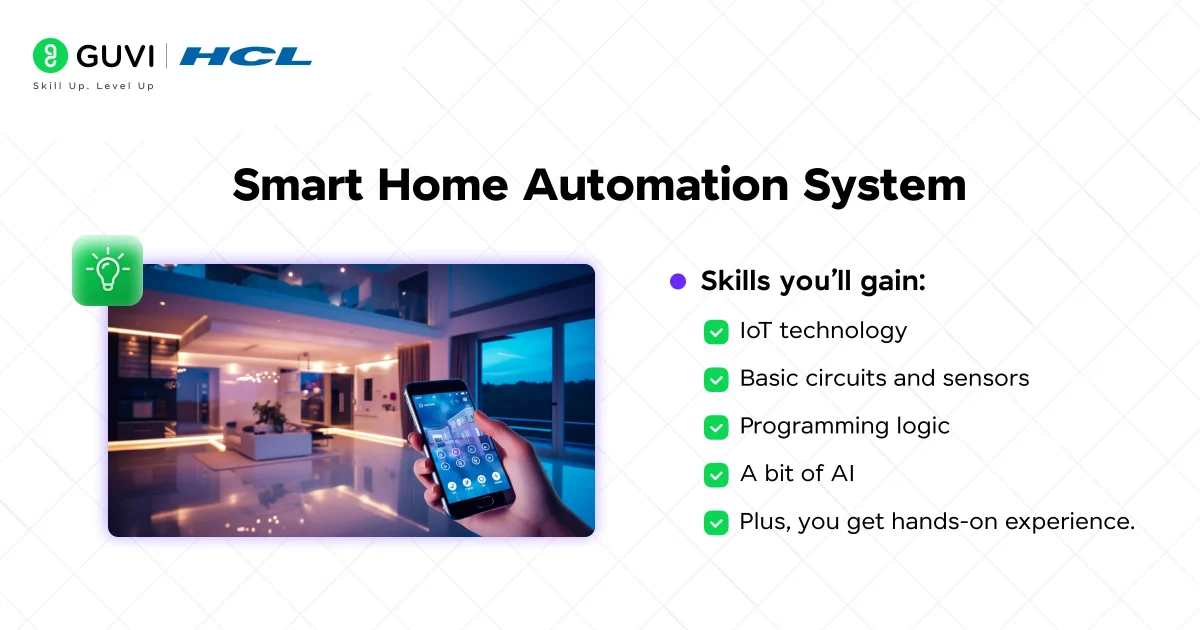
Imagine controlling the lights, thermostat, and locks in your home with your phone or even your voice. A Smart Home Automation System is a project idea that uses the Internet of Things (IoT) to connect everyday devices and make your home smarter and more efficient.
You could even program it to turn off appliances when you leave the room or have the coffee maker start brewing as soon as you wake up!
- Connect smart devices: Set up sensors (for motion, temperature, light, etc.) and actuators (smart bulbs, locks, and appliances) via a microcontroller like an Arduino or Raspberry Pi. These gadgets communicate with each other to automate tasks at home.
- Add intelligent features: Integrate machine learning so the system learns your habits. For example, it can adjust the heating automatically when you usually get home or recognize voice commands to dim the lights at bedtime.
- Skills you’ll gain: Working on this project teaches you about:
- IoT technology
- Basic circuits and sensors
- Programming logic
- A bit of AI.
- Plus, you get hands-on experience making life at home more convenient through tech creativity.
- Project Link: Smart Home Automation System
Project Idea 2: Augmented Reality (AR) Navigation App
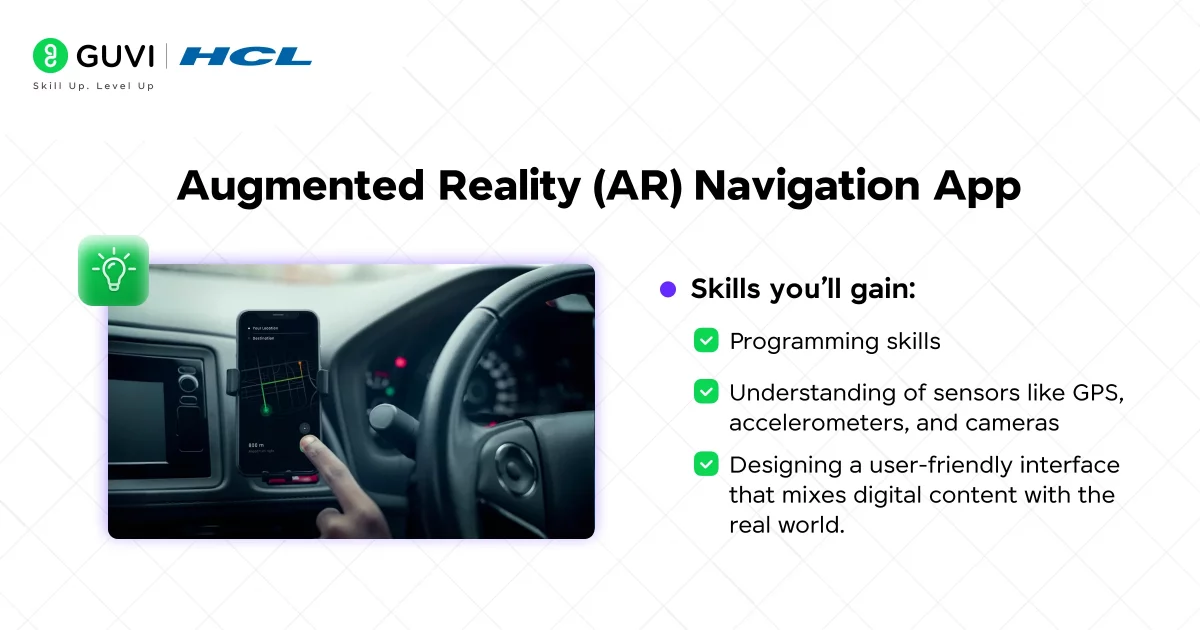
Have you ever gotten lost in a big campus building or a shopping mall? With an Augmented Reality navigation app, you can guide yourself indoors by overlaying digital directions onto the real world.
Point your phone’s camera at your surroundings, and arrows and labels will appear on-screen to tell you where to go. It’s like having a personal tour guide on your phone, showing you where to turn and what’s around you!
- How it works: Your app will use the phone’s camera and sensors to figure out your location and direction. As you move, it superimposes arrows or footsteps on the live camera view to guide you through hallways or up staircases. The directions update in real-time to lead you to your destination (library, cafeteria, you name it).
- Skills you’ll gain: Building an AR app boosts:
- Programming skills (especially in mobile development)
- Understanding of sensors like GPS, accelerometers, and cameras
- Designing a user-friendly interface that mixes digital content with the real world.
- Project Link: Augmented Reality (AR) Navigation App
Project Idea 3: Sustainable Energy Monitoring System
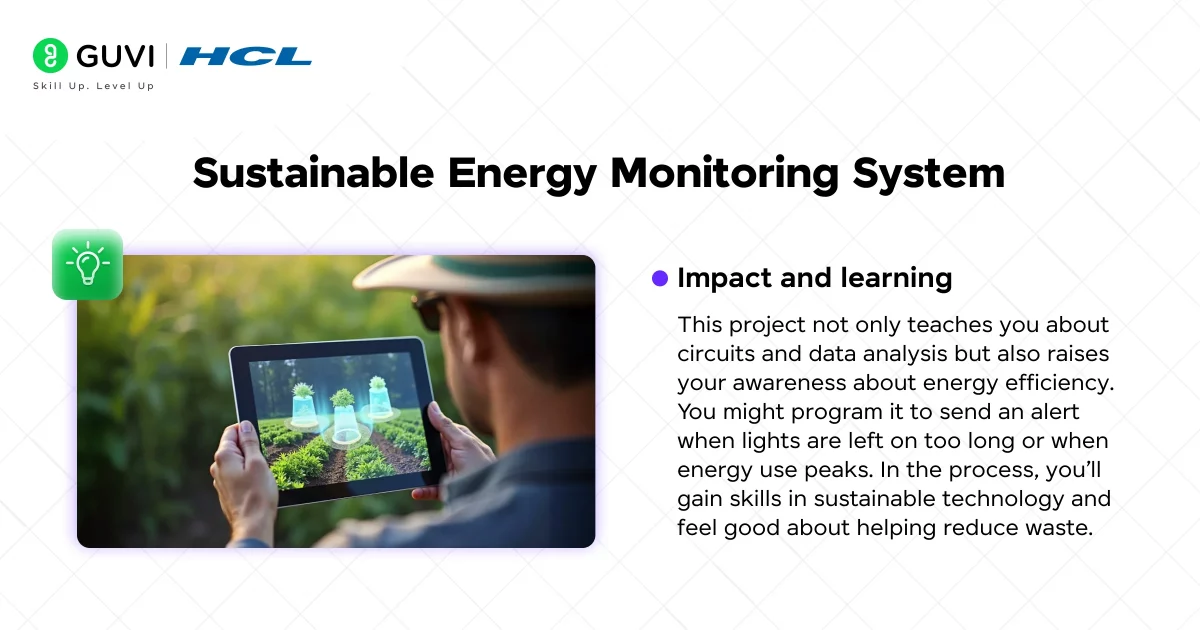
Do you care about the environment and want to make a difference? Try building a Sustainable Energy Monitoring System. In this project, you’ll create a setup to track how much energy is being used (and even generated) in a home or classroom and find ways to optimize it.
The idea is to use tech to promote sustainability by monitoring devices and possibly incorporating renewable sources like solar panels or wind turbines.
- Track usage and generation: Use IoT sensors or smart plugs to measure the electricity consumption of appliances in real-time, and if possible connect a small solar panel or wind turbine to monitor renewable energy generation.
By comparing energy used versus energy produced, the system can suggest ways to save power (for example, using stored solar energy at night). - Impact and learning: This project not only teaches you about circuits and data analysis but also raises your awareness about energy efficiency. You might program it to send an alert when lights are left on too long or when energy use peaks. In the process, you’ll gain skills in sustainable technology and feel good about helping reduce waste.
- Project Link: Sustainable Energy Monitoring System
Project Idea 4: Blockchain-Based Voting System
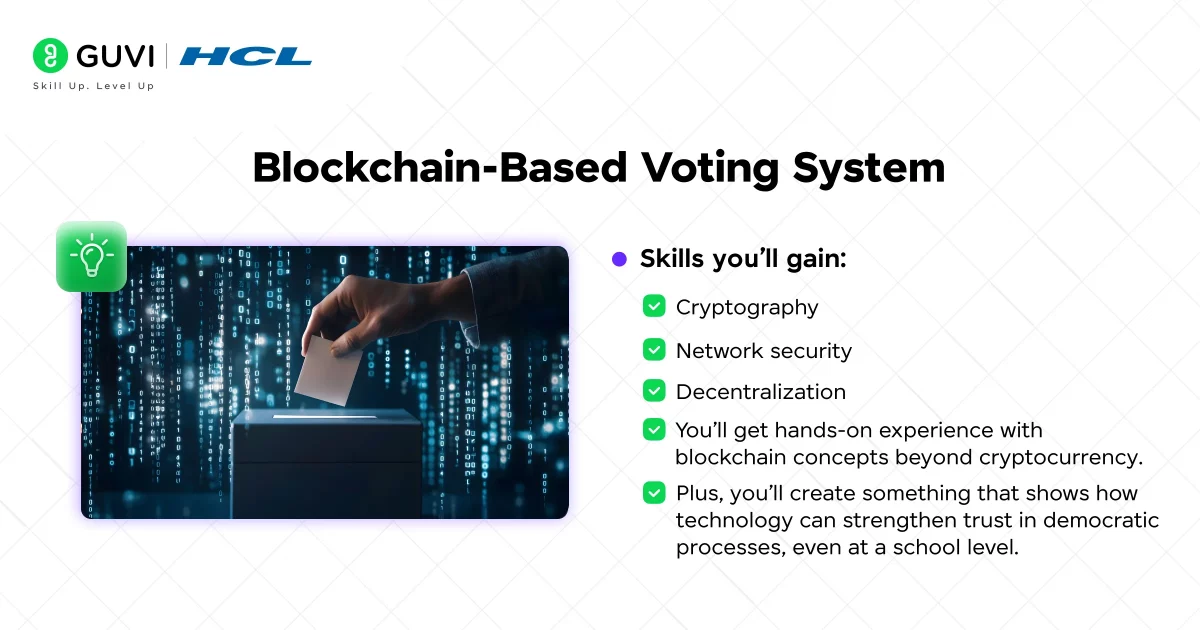
What if you could make voting in school elections or club decisions tamper-proof and transparent?
A blockchain-based voting system is an innovative project that applies the technology behind cryptocurrencies to create a secure voting platform. It’s like a digital ballot box that’s extremely hard to hack or manipulate.
- How it works: Blockchain technology (for example, Ethereum) is used as the backbone to record votes. Each vote is like a transaction added to an open ledger that everyone can verify. You can write a smart contract to enforce rules (like one vote per student) and automatically count votes when the election ends. This ensures the process is transparent and tamper-proof.
- Skills you’ll gain: Working on this project helps you learn about:
- Cryptography
- Network security
- Decentralization
- You’ll get hands-on experience with blockchain concepts beyond cryptocurrency.
- Plus, you’ll create something that shows how technology can strengthen trust in democratic processes, even at a school level.
- Project Link: Blockchain-Based Voting System
Project Idea 5: Virtual Reality (VR) Therapy for Mental Health
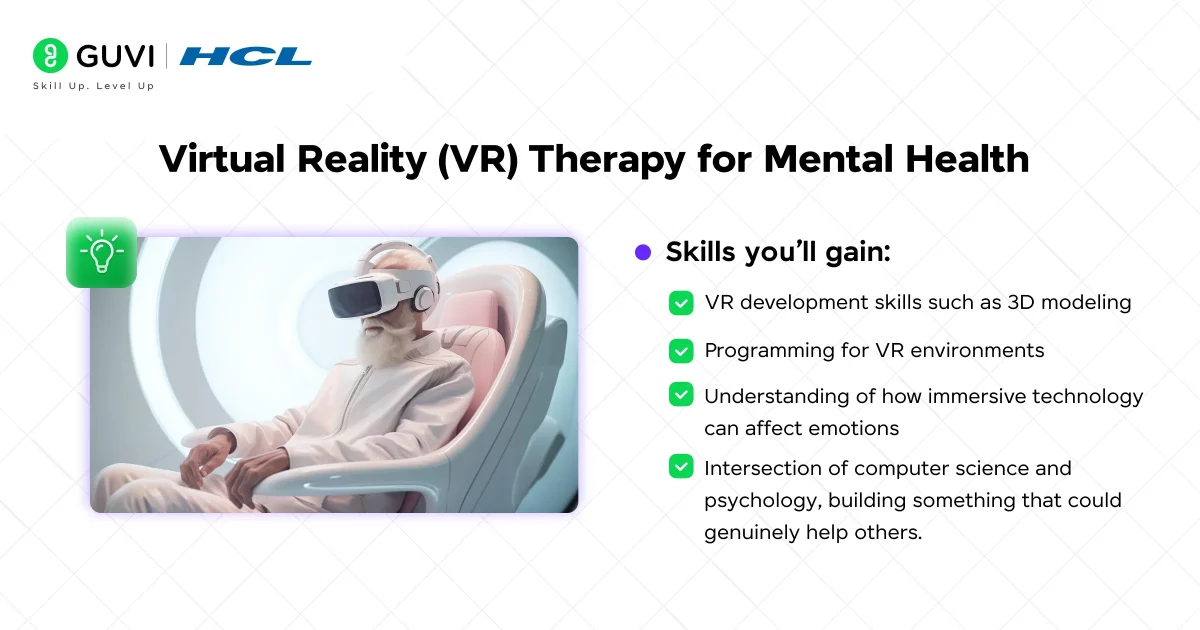
Technology isn’t just for entertainment, it can also help people. This project involves creating a Virtual Reality application to support mental health therapy.
Imagine putting on a VR headset and entering a calming forest or a safe virtual space to face your fears. You could help someone practice public speaking in a simulated auditorium or guide them through breathing exercises with guided breathing exercises, all through VR.
- Create calming VR scenes: Design immersive environments tailored for relaxation and healing. For example, one scenario could be a tranquil beach for mindfulness meditation, while another gently introduces a fear (like heights) by having the user stand on a virtual tall building, but in a controlled, safe way. Make these scenes interactive with soothing narration or tasks so users actively engage with the environment.
- Skills you’ll gain: This project combines creativity with empathy. You’ll learn:
- VR development skills such as 3D modeling
- Programming for VR environments
- Understanding of how immersive technology can affect emotions.
- The intersection of computer science and psychology, building something that could genuinely help others.
- Project Link: Virtual Reality (VR) Therapy for Mental Health
Project Idea 6: Health Monitoring Wearable
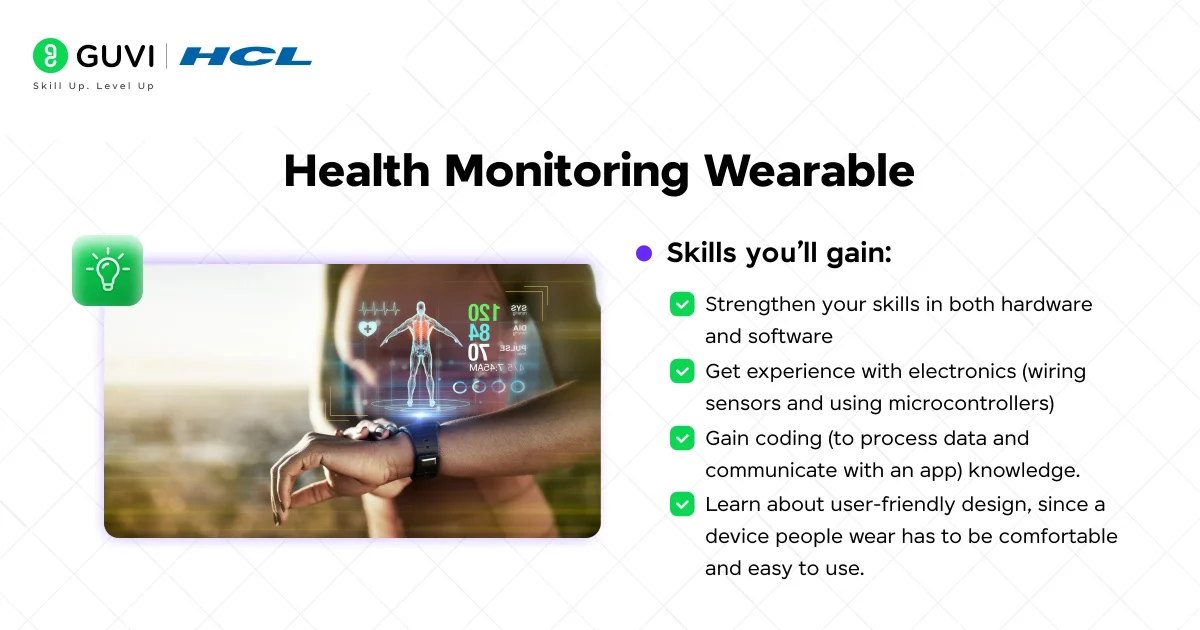
Wearable gadgets like fitness trackers and smartwatches are popular for a reason, they put health data right at your fingertips.
In this project, you’ll create a health-monitoring wearable device of your own. It could be a wristband, a clip-on, or even a smart t-shirt that keeps track of certain health metrics in real-time.
- Build the device and app: Combine small sensors to monitor vital signs (heart rate, body temperature, etc.) into your wearable design. Program a microcontroller to read the sensor data and send it to a smartphone app via Bluetooth.
On the app, you can display the person’s stats throughout the day and even set up alerts for unusual readings (for example, if the heart rate stays too high at rest). - Skills you’ll gain: Making a health wearable will help you:
- Strengthen your skills in both hardware and software.
- Get experience with electronics (wiring sensors and using microcontrollers)
- Gain coding (to process data and communicate with an app) knowledge.
- Learn about user-friendly design, since a device people wear has to be comfortable and easy to use.
- Project Link: Health Monitoring Wearable
Project Idea 7: Automated Agricultural Monitoring System
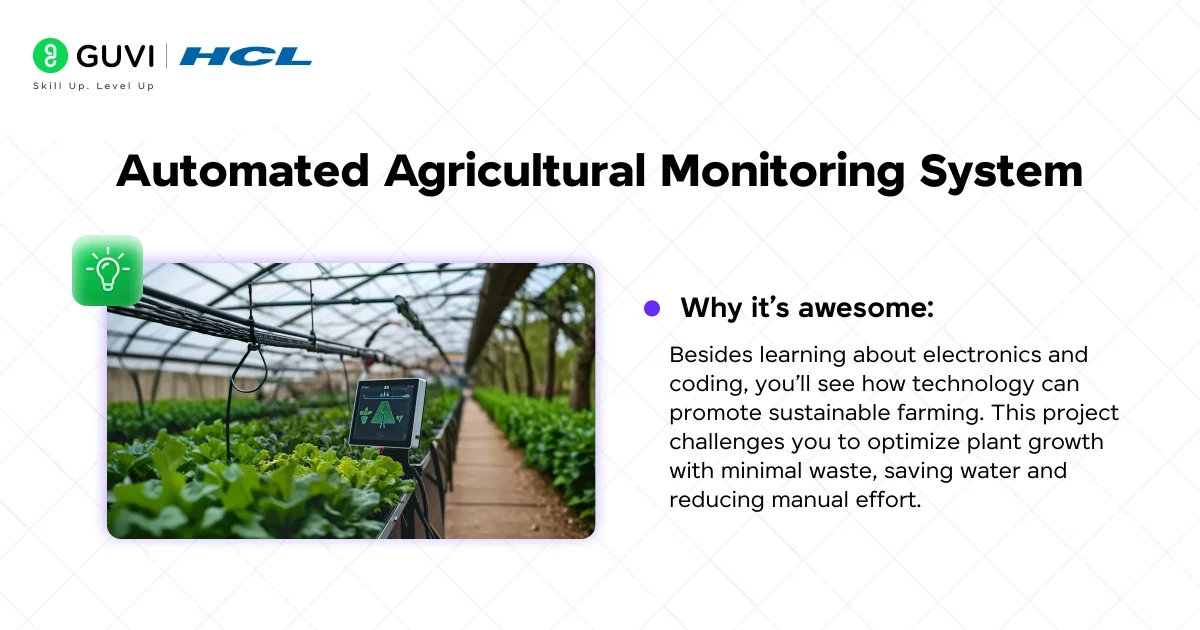
Farming might not be the first thing that comes to mind with technology, but modern agriculture uses a lot of tech!
This project involves creating an automated system to help farmers (or gardeners) monitor conditions and manage crops more efficiently. Think of it as a smart farming assistant that can help make sure plants get exactly what they need to thrive.
- Tech in farming: Set up soil sensors to measure moisture, temperature, and maybe pH. Connect them to a controller that can automatically turn on irrigation pumps or sprinklers when the soil is too dry, or send an alert if the soil needs fertilizer.
Using IoT, all this data can also be sent to your phone or computer, so you can check on the garden remotely and even adjust settings from afar. - Why it’s awesome: Besides learning about electronics and coding, you’ll see how technology can promote sustainable farming. This project challenges you to optimize plant growth with minimal waste, saving water and reducing manual effort.
- It’s a creative blend of environmental science and engineering, and it gives you practical experience in solving real-world problems in agriculture.
- Project Link: Automated Agricultural Monitoring System
Project Idea 8: AI-Powered Language Translation Device
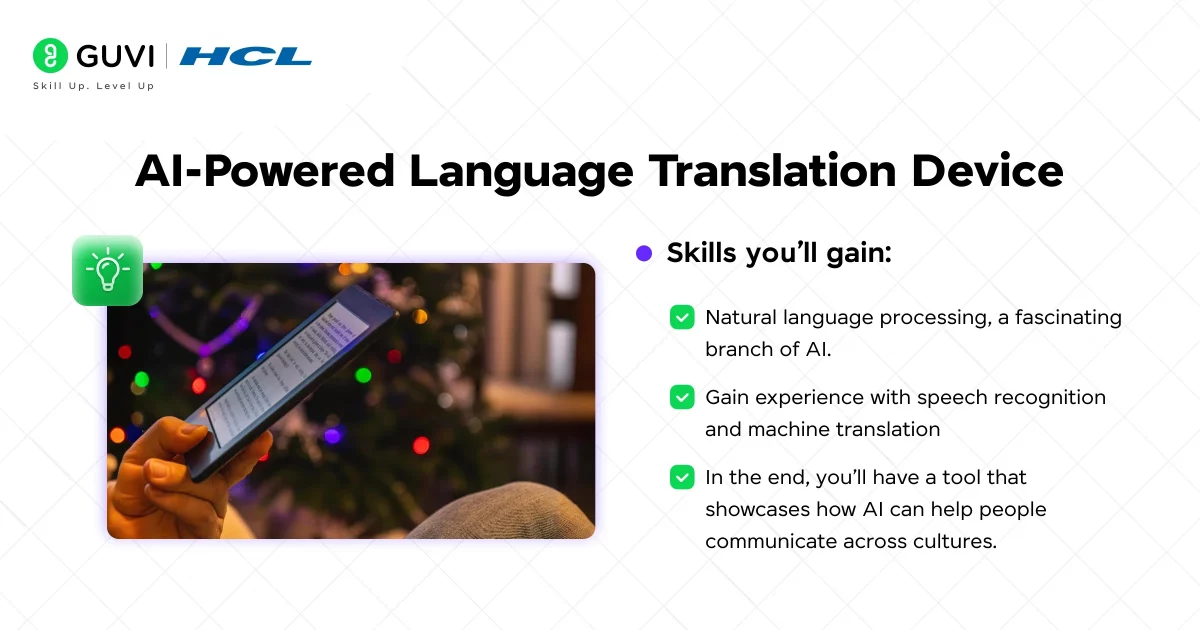
Break down language barriers by building a portable translator device powered by artificial intelligence (AI). Imagine a gadget that can listen to someone speaking one language and instantly output the phrase in another language. It’s like having a personal interpreter in your pocket, powered by AI language models.
- How it works: The device (or app) will listen to someone speaking in one language, convert it to text, translate the text into another language, and then speak out the result. For example, when someone speaks Spanish, your system could instantly play back the English translation for them to hear. You can do this with a microphone and speaker connected to a mini-computer, or entirely in software on a smartphone.
- Skills you’ll gain: This project teaches you about:
- Natural language processing, a fascinating branch of AI.
- Gain experience with speech recognition (to understand spoken words) and machine translation (to convert between languages)
- In the end, you’ll have a tool that showcases how AI can help people communicate across cultures.
- Project Link: AI-Powered Language Translation Device
If you want to learn more on how you can integrate Artificial Intelligence and Machine Learning into real-world applications, consider enrolling in GUVI’s IIT-M Pravartak Certified Artificial Intelligence & Machine Learning Course that lets you gain job-ready AI & ML skills in 5 months through Career Guidance & Globally Recognized Skill Certifications.
Project Idea 9: Cybersecurity Simulation Game
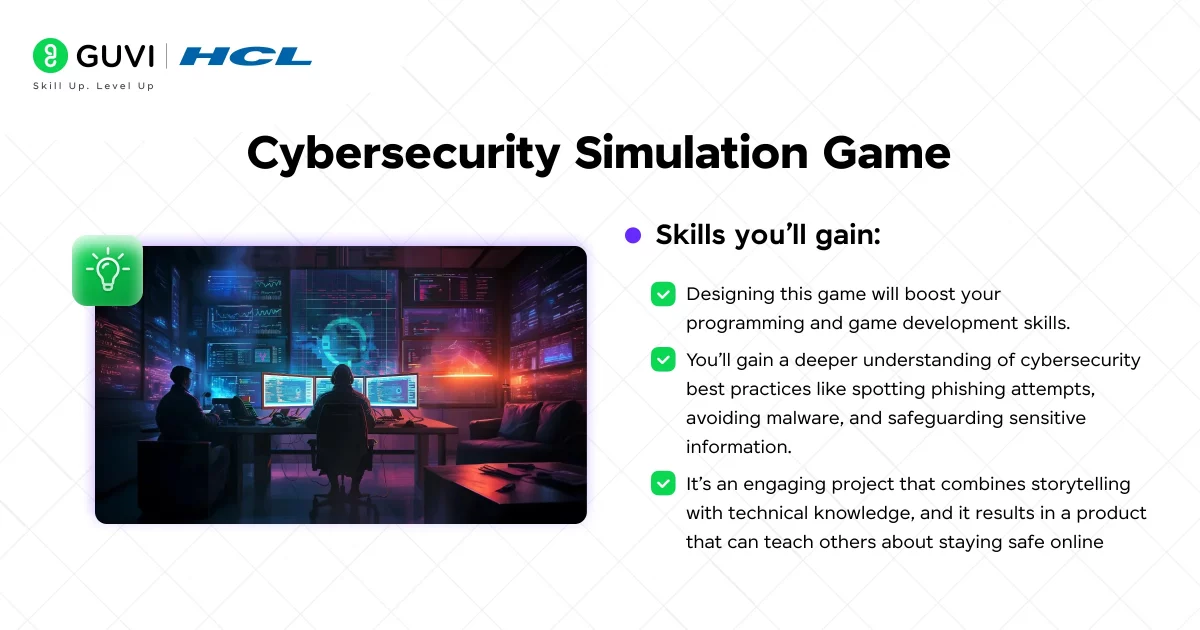
Games can be powerful learning tools. In this project, you’ll develop a game that turns cybersecurity lessons into an interactive adventure.
Instead of reading about threats and defenses in a textbook, imagine playing a game where you must protect a virtual company from hackers or even play as the hacker, all in a safe, simulated environment.
- Game play: Create scenarios that mimic real cybersecurity challenges. For example, one level might present you with a bunch of emails where you have to pick out the phishing attempts, while another level could have you configuring a firewall to block cyber attacks. Give players instant feedback, if they fall for a fake email, show the consequences (like a simulated data breach), and if they make the right choices, reward them.
- Skills you’ll gain:
- Designing this game will boost your programming and game development skills.
- You’ll gain a deeper understanding of cybersecurity best practices like spotting phishing attempts, avoiding malware, and safeguarding sensitive information.
- It’s an engaging project that combines storytelling with technical knowledge, and it results in a product that can teach others about staying safe online.
- Project Link: Cybersecurity Simulation Game
Project Idea 10: Autonomous Delivery Robot
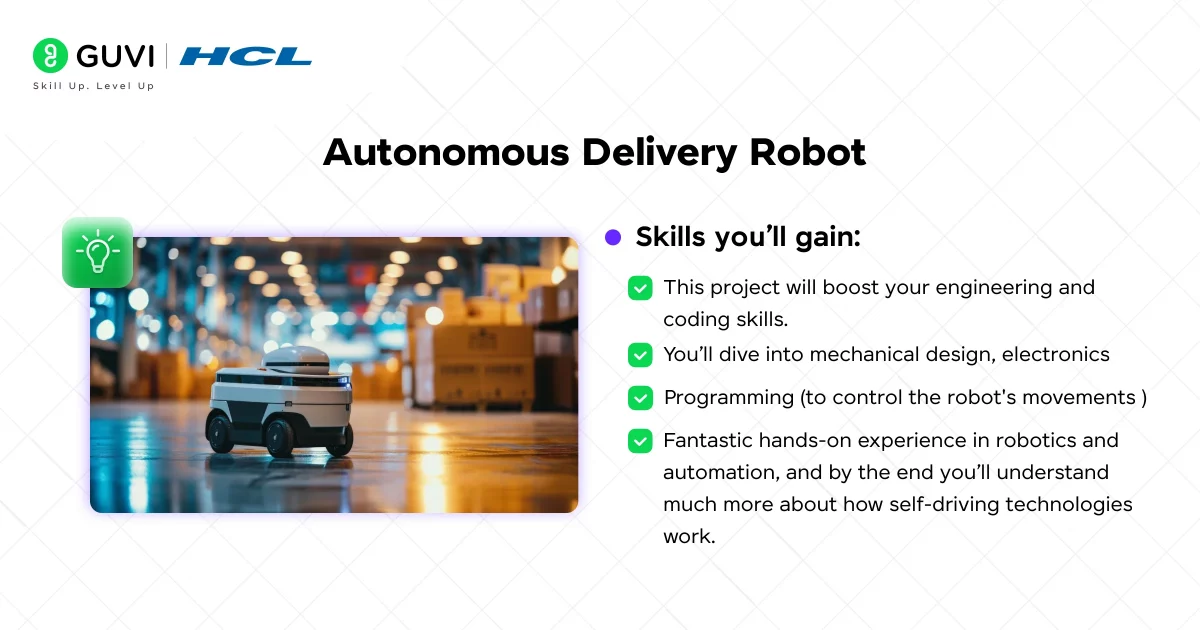
Robots delivering packages might sound like science fiction, but they’re becoming reality and in this project, you’ll build a small autonomous robot to carry items from place to place. For instance, you could make a robot car that brings you a snack from the kitchen.
- Building the bot: Construct a wheeled robot and equip it with sensors (such as cameras or ultrasonic sensors) so it can detect obstacles in its path. Program the microcontroller to drive the robot from point A to point B without remote control. You might start simple (following a line or set path) and later try more advanced navigation – for example, using GPS outdoors or having the robot recognize QR code markers to find a specific room.
Tools like the QR code Generator help with location-based markers the robot can scan to verify where it is. This technique can also be used in museum guide bots or even warehouse automation setups. - Skills you’ll gain:
- This project will boost your engineering and coding skills.
- You’ll dive into mechanical design (building the robot’s body and drivetrain), electronics (connecting motors and sensors to a controller)
- Programming (to control the robot’s movements and reactions).
- Fantastic hands-on experience in robotics and automation, and by the end you’ll understand much more about how self-driving technologies work.
- Project Link: Autonomous Delivery Robot
Each project idea above is not only a chance to create something cool but also a pathway to learn by doing.
Conclusion
In conclusion, to make sure you get the project that’s right, pick a project that genuinely excites you because that excitement will keep you motivated to overcome challenges and see it through to the end.
Remember, these projects are meant to be fun and educational. Don’t worry if everything doesn’t work perfectly on the first try, troubleshooting and improvising are part of the process. So go ahead and start brainstorming, gather your materials, and bring your chosen project idea to life.
By doing so, you’re not just completing an assignment; you’re embarking on a tech adventure that will boost your creativity and skills. Good luck, and happy building!
FAQs
Technical projects are crucial for students because they provide a hands-on, practical application of theoretical knowledge. Engaging in projects enhances problem-solving skills, encourages critical thinking, and bridges the gap between classroom learning and the real-world scenarios.
Projects allow students to develop a wide range of skills. From programming and engineering to data analysis and user interface design, students gain practical experience in various areas.
Choosing the right project involves considering personal interests and passions. Students should select a project that aligns with what excites them the most, whether it’s health tech, robotics, or sustainable energy.
Some beginner-friendly yet creative projects include a smart irrigation system, a basic health tracker, a chatbot using AI, or an AR flashcard app for learning.
You can use platforms like Arduino, Raspberry Pi, Unity, or Google Cloud. Online tutorials on YouTube, GitHub, and Coursera are also great starting points.





















![10 Impressive Data Visualization Project Ideas [With Source Code] 12 Data Visualization Project Ideas](https://www.guvi.in/blog/wp-content/uploads/2024/11/best_data_visualization_project_ideas_with_source_code_.webp)
![Top 12 Best Web Development Projects for All Techies [With Source Code] 13 web development project](https://www.guvi.in/blog/wp-content/uploads/2023/08/Feature-Image.webp)
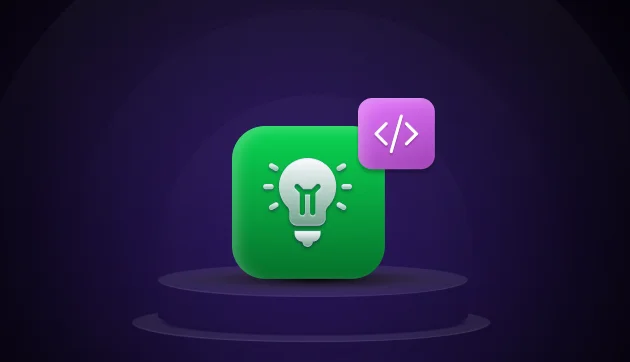

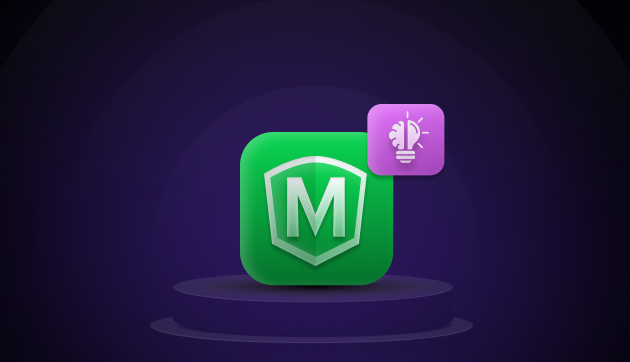

![Top 10 Coding Project Ideas for Beginners [With Source Code] 15 coding project](https://www.guvi.in/blog/wp-content/uploads/2024/05/Top-10-Coding-Project-Ideas-for-Beginners-With-Source-Code.webp)
![Top 9 Electronic Projects for Engineering Students [With Source Code] 16 Feature Image - Top Cutting-Edge Electronic Projects for Engineering Students](https://www.guvi.in/blog/wp-content/uploads/2024/05/Top-9-Electronic-Projects-for-Engineering-Students-With-Source-Code.webp)
![Best Project Ideas for Robotic Applications - Including All 3 Levels [2025] 17 Feature image - Best Project Ideas for Robotic Applications - Including All 3 Levels](https://www.guvi.in/blog/wp-content/uploads/2024/02/0-project_ideas_for_robotic_applications.webp)

Great list of project ideas! These are perfect for boosting creativity and hands-on learning. Excited to try a few—especially the innovative tech ones. I recently came into a Generative AI Free Toolkit for Project Managers. I believed your readers would also benefit from it. Reading over the fantastic stuff you have posted here was very refreshing.
Very innovative project ideas